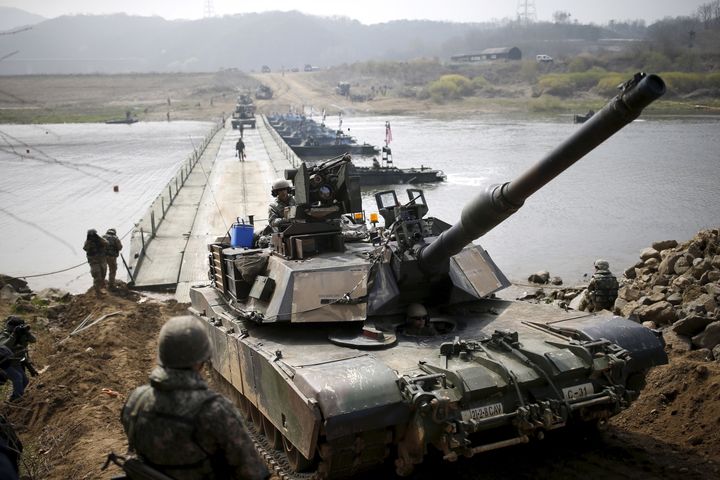
This article was originally published on 24/7 Wall St.
Military spending in the United States totaled $596 billion in 2015, far and away the largest annual military expenditure in the world at nearly three times that of second-place China. While the U.S. military will likely not be outspent any time soon, American defense spending has declined each year since its most recent peak in 2010. Meanwhile, a number of other countries have substantially increased their military budgets in recent years.
The nations of the world spent $1.68 trillion on their militaries in 2015, up slightly from 2014, the first global increase since 2011. Based on annual military expenditures estimated by the Stockholm International Peace Research Institute (SIPRI), 24/7 Wall St. reviewed the 10 countries with the largest one-year military expenditure increases as well as the 10 nations with the largest military spending declines.
Short-term spikes in military spending are often in response to heightened regional tensions or a country’s ongoing involvement in a conflict. According to Dr. Sam Perlo-Freeman, senior researcher at SIPRI, “It’s not surprising that in light both of ongoing conflicts and the rebuilding post conflict that large increases of military spending are going on” in these war-torn areas.
Click here to see the countries with the fastest growing militaries.
Click here to see the countries with the fastest shrinking militaries.
Click here to see the countries spending the most on military.
Violent conflicts help explain the one-year military spending growths in nearly all of these nations with the largest spending increases. Perceived threats from Russia, which used its enormous military might to annex Crimea in 2014, likely triggered Poland’s decision to increase military spending. The Philippines is another example. The small island nation increased its military budget by over 25% last year due in large part to heightened tensions with China over fishing rights in the South China Sea.
Ultimately, the strength of a nation’s economy dictates the growth of its military spending. In Uruguay, Paraguay, and several other South American nations, a conflict was not necessary to trigger defense spending sprees. Just as the largest military spenders tend to be among the wealthiest nations in the world, strong economic conditions in Uruguay and Paraguay largely explain the defense spending increases in those nations.
By the same logic, a country mired in violent conflict may not be able to expand its military spending. War and violence are still raging in Afghanistan, for example. However, the withdrawal of international aid has led to the nation’s 19.0% military spending drop. Similarly, in South Sudan, where the military has its hands full with civil war, military spending dropped by 25.4% because of poor economic conditions. Well over half of South Sudan’s government revenue comes from oil, and the precipitous drop in oil prices largely explains the spending decrease.
This was the case in a number of the nations recording the largest military spending declines. Most notably perhaps are Oman and Venezuela, the nations with the fastest and 10th fastest shrinking military budgets. Both of these countries are major oil producers. While military spending in these nations dropped considerably over the last year, their military spending as a share of GDP actually rose over the same period, reflecting the sharp decline in their economic output.
To identify the countries with the fastest rising and fastest falling military budgets, 24/7 Wall St. reviewed the increases in military expenditures from 2014 through 2015 as estimated by the Stockholm International Peace Research Institute (SIPRI) in its most recent annual “Trends in World Military Expenditure, 2015” report. We only considered countries with military expenditures of at least $100 million. Spending as a share of GDP and absolute spending figures for 2015, 2014, and 2006 also came from SIPRI. Military expenditure data include all current and capital expenditure on:
• The armed forces, including peacekeeping forces
• Defence ministries and other government agencies engaged in defence projects
• Paramilitary forces, when judged to be trained and equipped for military operations
• Military space activities
• Military and civil personnel, including retirement pensions and social services for military personnel
• Operations and maintenance
• Procurement
• Military research and development
• Military aid (in the military expenditure of the donor country)
We also considered 2015, 2014, and 2006 per capita GDP from the International Monetary Fund (IMF). Gross domestic product is based on purchasing power parity (PPP) and is in current international dollars.
These are the countries with the fastest growing (and shrinking) military expenditures:
10. Paraguay

> Military spending 1 yr. increase: 20.8%
> 2015 military spending: $462 million
> Region: South America
> Population: 6.90 million
Paraguay’s military expenditure of $462 million rose by 20.8% last year, the 10th largest one-year spending increase of countries reviewed. Financial instability often triggers military budget cuts, and in times of economic growth nations tend to raise budgets. Like in several other South American countries, the defense spending boosts in Paraguay are the result of strong economic conditions. The country’s per capita GDP of $8,671 is up from the previous year. Paraguay’s defense spending amounts to 1.6% of GDP, also an increase from 1.4% in 2014.
9. Poland
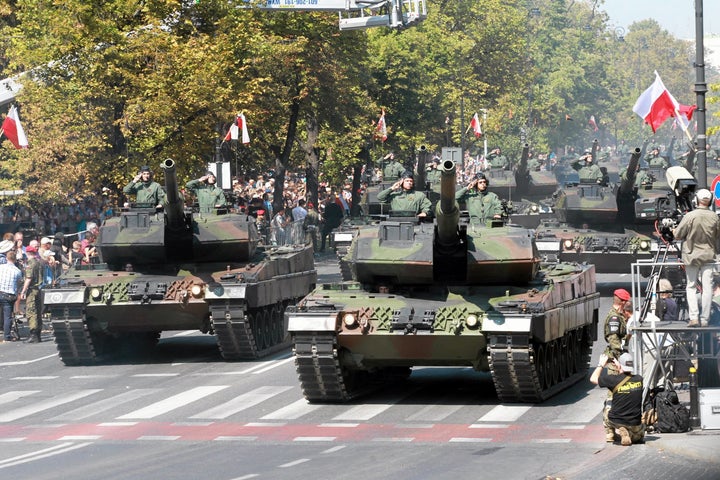
> Military spending 1 yr. increase: 21.8%
> 2015 military spending: $10.5 billion
> Region: Central Europe
> Population: 38.02 million
The defense spending spike in Poland reflects rising fears of threats from Russia — the world’s fourth largest military spender. Tensions are high in the region, especially since Russia annexed Crimea in 2014, which had been part of Ukraine. Polish military spending reached 2.2% of its GDP in 2015, in contrast with spending levels in past years, which consistently remained below 2%. Poland announced its 10-year, $35 billion military modernization plan in 2013, which includes the purchase of 32 combat helicopters, 97 drones, hundreds of armored vehicles, naval vessels and coastal defense systems — to name just a few of the major purchases.
8. Kenya
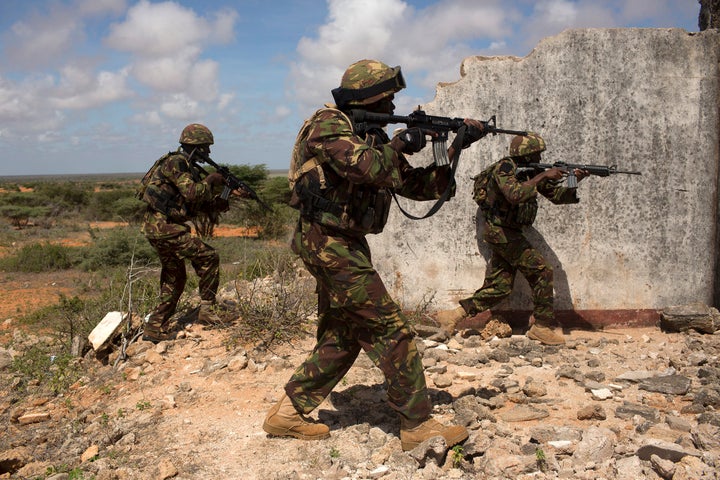
> Military spending 1 yr. increase: 22.4%
> 2015 military spending: $954 million
> Region: Sub-Saharan Africa
> Population: 42.93 million
Kenya’s 22.4% increase in military spending last year was the eighth largest in the world. Over the past 10 years, the East African country’s military spending increased by 46.7%, also one of the largest such increases. The country’s involvement in neighboring Somalia’s conflict with the militant Islamist group al-Shabab largely explains the spending growth. Kenya joined the UN-backed African Union force in Somalia at the end of 2011.
7. Uruguay

> Military spending 1 yr. increase: 22.6%
> 2015 military spending: $962.55 million
> Region: Americas
> Population: 3.4 million
Recessions tend to precede military budget cuts, and in times of economic stability and growth nations tend to raise budgets. The defense spending boosts in Uruguay and several other South American countries are due to the relatively strong economic conditions there. Uruguay has one of the highest regional per capita GDPs at $21,719. Of South American countries, it also has the fastest growing military expenditure.
6. Philippines
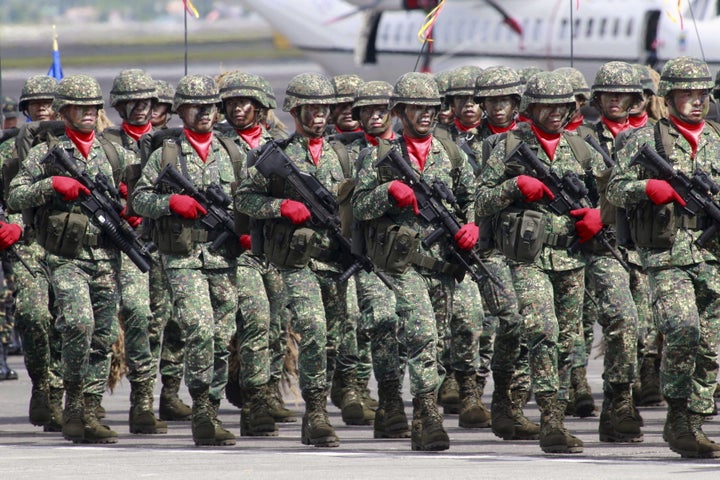
> Military spending 1 yr. increase: 25.5%
> 2015 military spending: $3.9 billion
> Region: South-East Asia
> Population: 99.4 million
The Philippines is one of several nations involved in territorial disputes in the South China Sea mainly with China, which has the second largest military expenditure in the world. Beyond the oil deposits that may lie under the sea, the countries in the region are fighting primarily over fishing rights. The Philippines is one of the world’s largest fish producers. Fish is essential for the economies of the Philippines and surrounding regions.
In April, 5,000 U.S. troops participated in the annual Balikatan military exercise with the Philippines armed forces.
5. Luxembourg

> Military spending 1 yr. increase: 29.7%
> 2015 military spending: $303.2 million
> Region: Western Europe
> Population: 600,000
Major world powers such as the United Kingdom and United States have urged their fellow NATO members to spend at least 2% of their GDP on defense. For Luxembourg, this appears to be an unrealistic goal as military spending as a percentage of GDP, at just 0.5%, ranks among the very lowest in the world. Investment as a percent of GDP remained small even after the country’s military expenditure increase of nearly 30% in 2015. The increase may have been a response to U.S. and NATO urging. Perlo-Freeman suggested that for Luxembourg the short-term spike may be a one-off equipment purchase. For major military powers these purchases occur every year, but for Luxembourg they are only made occasionally.
4. Lithuania
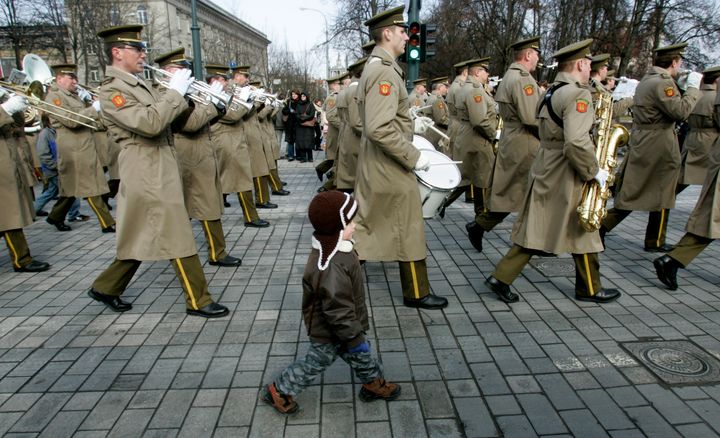
> Military spending 1 yr. increase: 32.7%
> 2015 military spending: $471.4 million
> Region: Central Europe
> Population: 2.9 million
The Lithuanian government reinstated conscription in 2015 to bolster the ranks of its military. According to the Lithuanian Ministry of Defense, the move follows Russia’s annexation of Crimea and the deteriorating relations with its neighbor. Of Baltic states reviewed by SIPRI, Lithuania’s military expenditure increase was by far the largest, at 32.7%. By contrast, the respective spending increases in Estonia and Latvia were 6.6% and 13.7%.
3. Iraq
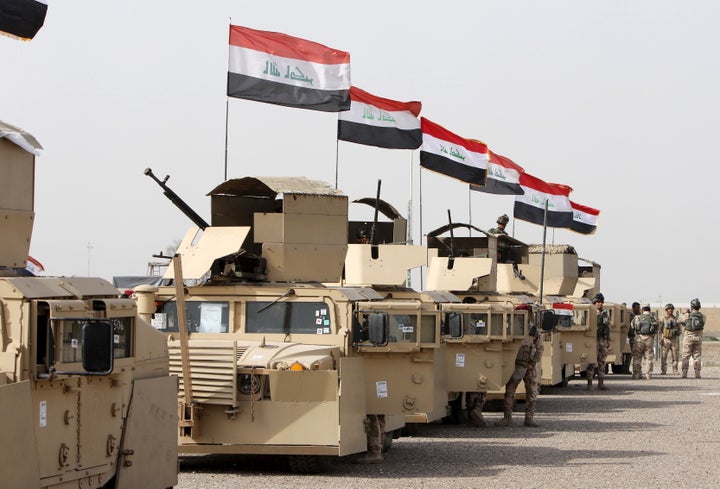
> Military spending 1 yr. increase: 35.3%
> 2015 military spending: $13.1 billion
> Region: Middle East
> Population: 34.3 million
The U.S. military withdrawal from Iraq and Afghanistan had a major impact on military spending in the region. But while defense spending in Afghanistan dropped precipitously last year, Iraq’s expenditure rose by 35.3%, trailing just two other nations. Over the last 10 years, spending in the country rose by 535.6%, the largest 10-year growth of any country in the world.
The Iraqi government has rebuilt its military in the wake of the U.S.-led invasion. The country’s expensive struggle with the Islamic State terrorist group is also a major reason for Iraq’s military budget and spending increases.
2. Democratic Republic of the Congo
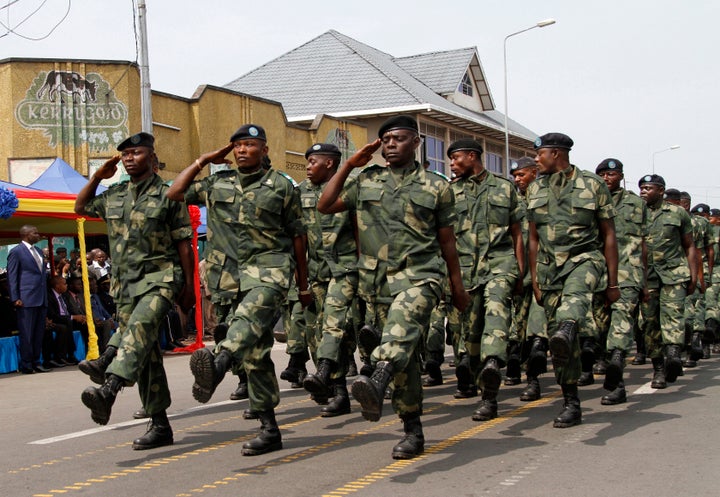
> Military spending 1 yr. increase: 42.6%
> 2015 military spending: $491.3 million
> Region: Sub-Saharan Africa
> Population: 79.3 million
Military spending in the Democratic Republic of the Congo (DRC) increased by 42.6% last year and by 139.0% over the past 10 years, each among the largest such increases worldwide. War has ravaged the eastern DRC since the 1990’s, and like many other countries on this list, the conflict has had a major impact on defense spending. While economic decline often triggers the tightening of military budgets, this has not been the case in the DRC. The country is perhaps the most impoverished nation in the world with GDP per capita of only $753.
1. Mali
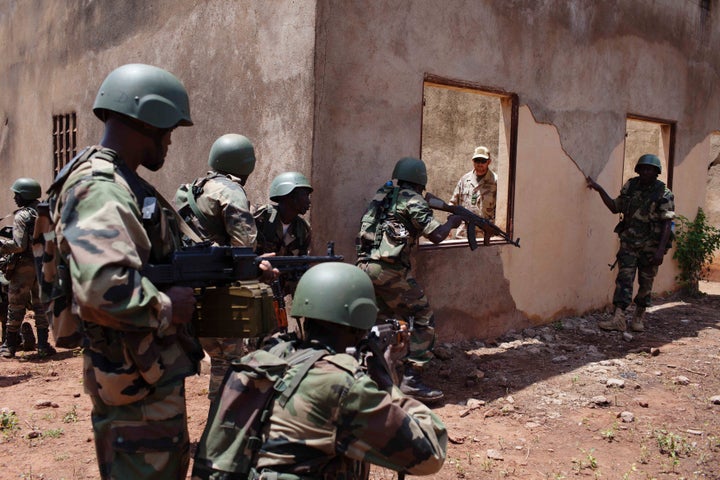
> Military spending 1 yr. increase: 65.5%
> 2015 military spending: $309.1 million
> Region: Sub-Saharan Africa
> Population: 15.8 million
Mali boosted its military spending by 65.5% last year, by far the largest spending spike worldwide. Over the last 10 years, military expenditure in the West African country increased by 185.1%, the eighth largest increase of countries reviewed over that time period. Like a number of other countries with soaring military budgets, Mali is not an especially peaceful place. France, the country’s former colonial ruler, has had a major military presence in Mali since it intervened in January 2013 to help stabilize the country following a coup in 2012. The northern part of the country is currently mired in a struggle against numerous militant Islamic groups.
Read more on 24/7 Wall St.